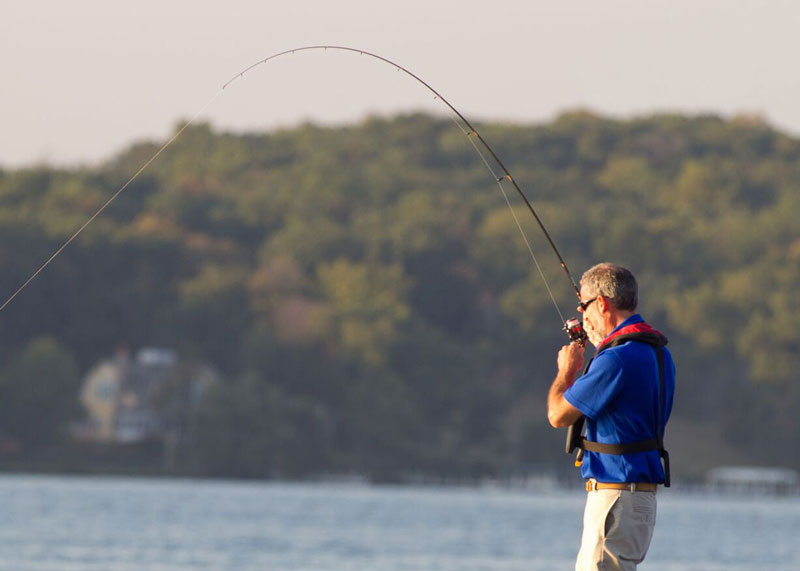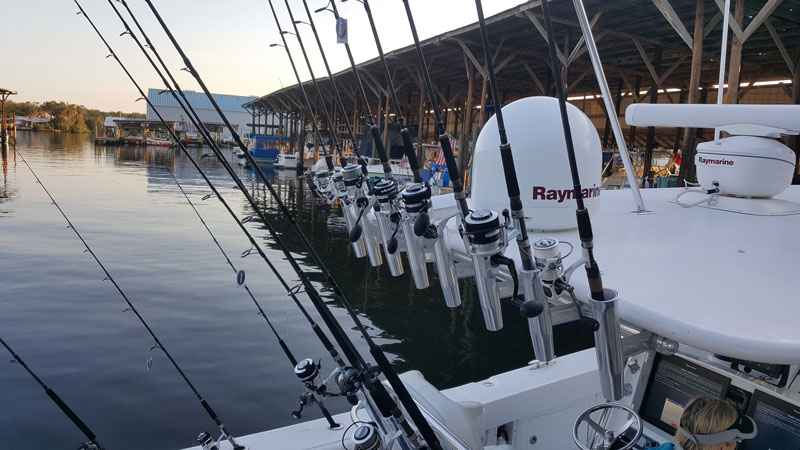The fishing rod market can be quite overwhelming with the gazillions of brands, materials, models, and actions offered nowadays. Knowing where to begin can be difficult. So, let’s take a look at narrowing down your options through a detailed overview of the various categories of rods and what specific details to look for.

Many factors such as rod length, action, and lure weight, are crucial to selecting the right tool for the job. When choosing a rod the first key step is to ask yourself what type of fishing you will be doing. More specifically, will you be fishing freshwater or saltwater? From a boat or shore? Tossing bait or lures? Much like golf clubs, fishing rods each have their own use. You wouldn’t use a putter to tee off, nor would you go jigging from a boat with a surf rod.
Before diving into what type of rods to use for each application let’s address what all the fancy lingo means. Every rod lists a few basic pieces of information including length, lure weight, line weight, action, and power. The length of the rod is pretty self-explanatory. The lure weight is the suggested weight range in ounces (or sometimes grams) that can be comfortably thrown with a rod, and staying more or less within this range will help prevent overloading it. The line weight is the recommended line weight to put on your reel, and line weight is often used for describing the weight of the rod. A 10- to 15-pound class rod, for instance, is a rod rated for 10- to 15-pound line. Rod power is the amount of force it takes to bend a rod. Powers span from ultralight (UL), light (L), medium light (ML), medium (M), medium heavy (MH), heavy (H), to extra heavy (XH). The heavier the power the more force required to bend the rod, therefore an H or XH will be much stiffer than a UL or L rod. And action is where in the rod the bend occurs. Actions range from slow (S), moderate (M), moderate fast (MF), fast (F) to extra-fast (XF). The faster the rod the more the bend is concentrated in the tip, the slower the action the more there is an even bend throughout the rod.
Next, let’s make sense of what all these details mean when selecting a rod. Typically, longer rods are better for fishing from the bank (unless overhanging trees are present), while shorter rods are better for fishing from a boat. Surf fishing rods used for fishing from the beach are usually the longest and may also be used whenever casting large rigs from shore.
Heavier power rods are better for long throws because they can cast heavier weights and lures. H and XH rods are ideal for casting bait as far as possible when catfishing or fishing from the surf, for example. They’re also appropriate for handling the strong pulls of very large fish. M and MH surf rods are better suited for casting smaller lures and rigs because they will not be as stiff and they will not wear you out as much casting all day.
At the other end of the extreme, panfishing for perch, bluegill, and crappie requires much smaller and lighter power rods to cast small lures and baits, as well as detect subtle bites. So if your goal is to go throw a worm under a bobber or fish small plastics for small panfish, consider a rod in the 6’0” to 7’0” range with an UL to L power.
In-between, there’s a wide range of options for a wide range of fish and fishing styles. Bass require a slightly heavier power rod, something in the 6’6” to 7'6” and ML to H range. Starting off, a 7’0” medium power rod will be sufficient for most applications for bass fishing. Due to the dense vegetation snakehead frequent, upgrading to a MH or H rod for snakehead will make fishing around grass and lilies more effective since you have some extra power to horse the fish out of the cover.

When light tackle jigging for fish like stripers most people use a 6’6” to 7’0” M rod with a F or XF tip to maintain contact with their jig and make fast hooksets. The term “light tackle,” in this case, is relative (since heavier gear was traditionally used for catching rockfish), as opposed to referring to the specific weight rating of the rods.
The best way to find a good fit is to go into your local tackle store and tell them exactly what type of fishing you plan to do and what your budget is, and they will be able to recommend the best rods for your style of fishing in your budget. You don’t need to start off with every single model rod in a line off the bat, but you’ll evolve as an angler and soon realize that no one rod can cover all the bases; specific rods are the best tools for specific jobs. If you’re like most anglers, before you know it you’ll have a garage full of different tools!
-By Ian Rubin